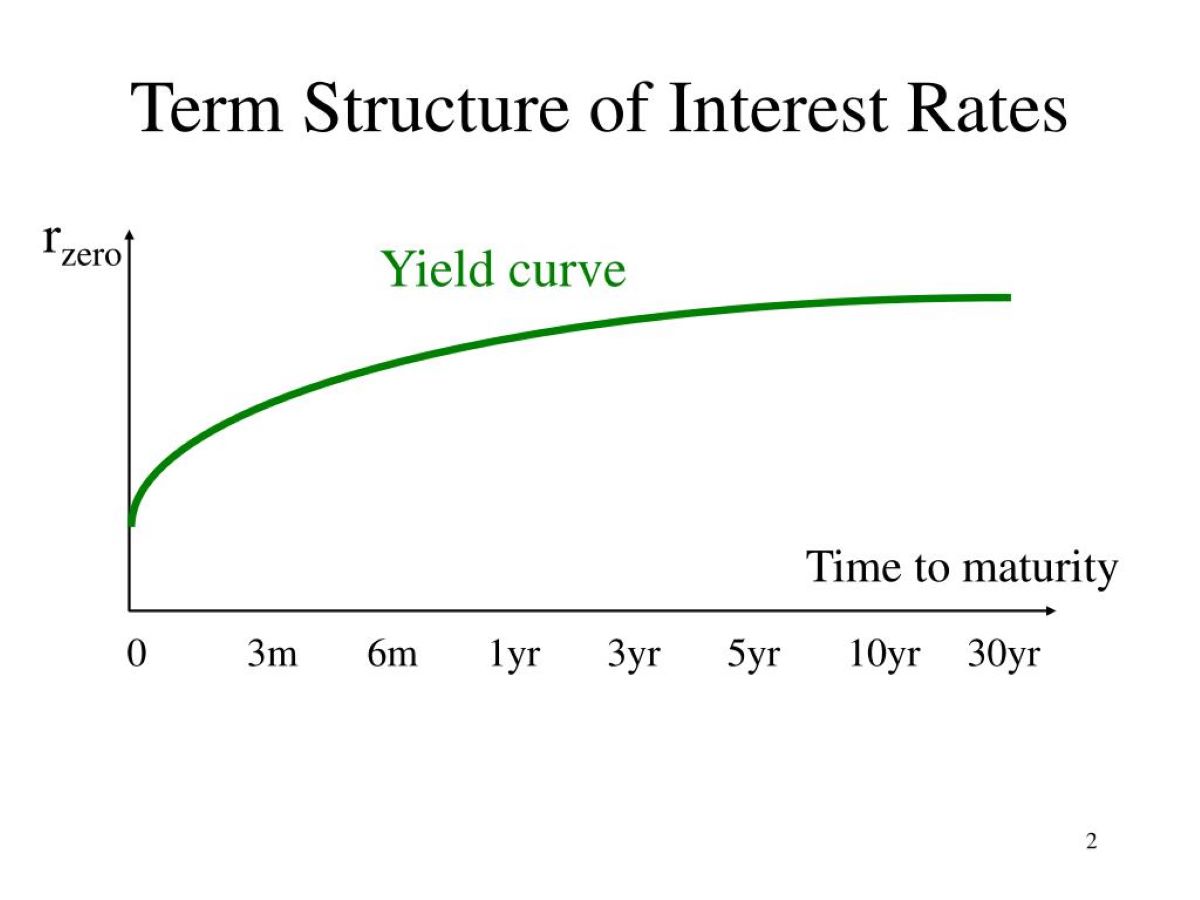Home>Finance>What Does Liquidity Mean In A Life Insurance Policy?


Finance
What Does Liquidity Mean In A Life Insurance Policy?
Modified: February 21, 2024
Discover the meaning of liquidity in a life insurance policy and how it affects your finances. Gain insights on managing your policy's cash value and understanding its implications.
(Many of the links in this article redirect to a specific reviewed product. Your purchase of these products through affiliate links helps to generate commission for LiveWell, at no extra cost. Learn more)
Table of Contents
Introduction
Welcome to the world of life insurance, where financial protection meets long-term planning. Life insurance is a crucial tool for securing your loved ones’ financial future in the event of your untimely demise. However, as with any financial instrument, it’s crucial to understand the various terms and features associated with life insurance policies.
One such term is “liquidity,” which has a significant impact on the functionality and flexibility of a life insurance policy. In this article, we will explore what liquidity means in the context of life insurance and why it’s essential to grasp its implications.
Life insurance is designed to offer financial security to your beneficiaries in the unfortunate event of your passing. It provides a death benefit, which is a lump sum payment paid out to your loved ones, ensuring that they can maintain their financial stability and cover expenses such as mortgage payments, education costs, and daily living expenses, even without your presence.
Life insurance policies come in various types, including term life insurance, whole life insurance, and universal life insurance. Each type has its own set of features and benefits, catering to different financial needs and goals. Understanding these nuances is crucial in making an informed decision about the type of life insurance policy that suits your circumstances.
Now that we have a basic understanding of life insurance let’s delve into the concept of liquidity and its relevance in the context of life insurance policies.
Understanding Life Insurance
Before we dive into the intricacies of liquidity in life insurance, it’s vital to have a solid foundation in understanding the basics of life insurance itself.
Life insurance is a contract between an individual (the policyholder) and an insurance company. The policyholder pays regular premiums to the insurance company in exchange for a death benefit that is paid out to their chosen beneficiaries upon their passing. The death benefit is intended to provide financial protection and support for the policyholder’s loved ones.
There are several types of life insurance policies, each with its own unique features. Term life insurance provides coverage for a specific period, such as 10, 20, or 30 years. Whole life insurance, on the other hand, offers coverage for the entire lifetime of the policyholder as long as premiums are paid. Universal life insurance combines a death benefit with a savings component, allowing policyholders to build cash value over time.
The premiums for life insurance policies depend on various factors, including age, health, lifestyle, and the coverage amount. The younger and healthier you are, the lower your premiums are likely to be. It’s important to choose a policy that aligns with your financial goals and provides sufficient coverage for your loved ones.
Additionally, life insurance policies can also offer optional riders or add-ons to enhance coverage. These riders may include options for accelerated death benefits, which allow policyholders to access a portion of their death benefit if they are diagnosed with a terminal illness. Other riders may provide benefits in the event of disability, critical illness, or long-term care needs.
By understanding the basics of life insurance, you are better equipped to comprehend the role of liquidity in these policies. Liquidity refers to the ease with which an asset or investment can be converted into cash without significantly impacting its value. In the context of life insurance, liquidity refers to the accessibility and availability of the cash value or death benefit of a policy.
What is Liquidity?
Liquidity is a crucial concept in the world of finance and investments. It refers to the ease with which an asset or investment can be bought or sold in the market without causing significant price fluctuations. Assets that can be easily converted into cash without a substantial loss in value are considered to be highly liquid.
When applied to life insurance, liquidity refers to the availability and accessibility of the cash value or death benefit of a policy. In simple terms, it represents how quickly and easily you can access the funds tied to your life insurance policy.
In the context of life insurance, liquidity is an important consideration because it impacts your ability to meet short-term financial needs or take advantage of potential opportunities. A policy with high liquidity allows you to tap into the cash value or death benefit when you need it, providing financial flexibility and peace of mind.
It’s worth noting that liquidity in life insurance policies varies depending on the type of policy you have. Term life insurance policies, for instance, are typically less liquid because they only provide a death benefit and do not accumulate cash value over time. On the other hand, permanent life insurance policies, such as whole life or universal life insurance, have a cash value component that grows over time and can be accessed by the policyholder.
Overall, liquidity is essential because it ensures that your life insurance policy aligns with your changing financial goals and circumstances. It allows you to address unexpected expenses, seize investment opportunities, or make necessary adjustments to your financial plan without having to surrender or terminate your policy prematurely.
Now that we have a clear understanding of liquidity let’s explore its significance in the context of life insurance policies.
Liquidity in the Context of Life Insurance
When it comes to life insurance, liquidity plays a vital role in determining the flexibility and usefulness of a policy. It refers to the ease with which you can access the cash value or death benefit of your life insurance policy as and when you need it.
Liquidity in life insurance policies can be viewed from two perspectives:
- Cash Value Liquidity: Permanent life insurance policies, such as whole life or universal life insurance, often accumulate a cash value component over time. This cash value grows tax-deferred and can be accessed by the policyholder through withdrawals or loans. The ability to withdraw funds or borrow against the cash value provides a level of liquidity, allowing you to access the accumulated value for various purposes. It can be used to supplement retirement income, cover emergency expenses, fund a child’s education, or even serve as a source of collateral for loans.
- Death Benefit Liquidity: The primary purpose of life insurance is to provide financial protection to your beneficiaries in the event of your passing. The death benefit, which is the sum of money paid out to your loved ones, serves as a form of liquidity for them. It ensures that they have immediate access to funds to cover expenses such as funeral costs, outstanding debts, and ongoing financial obligations. The death benefit liquidity guarantees that your loved ones are financially secure and can maintain their quality of life without significant financial strain.
Having both cash value liquidity and death benefit liquidity provides policyholders with flexibility and peace of mind. It allows individuals to adapt to changing financial situations and address immediate needs without having to surrender or terminate their life insurance policies prematurely.
It’s important to note that the liquidity of a life insurance policy may vary depending on the specific terms and conditions of the policy. Some policies may have restrictions or penalties for accessing the cash value, while others may provide more flexibility and options for accessing funds.
Next, we will explore the factors that can affect the liquidity of a life insurance policy.
Factors Affecting Liquidity in Life Insurance Policies
While life insurance policies provide a level of liquidity, it’s important to understand that certain factors can affect the accessibility and flexibility of the cash value or death benefit. Here are some key factors that can impact the liquidity of a life insurance policy:
- Policy Type: The type of life insurance policy you have plays a significant role in determining its liquidity. Term life insurance policies, which provide coverage for a specific period, typically do not accumulate cash value and therefore have limited liquidity. On the other hand, permanent life insurance policies, such as whole life or universal life insurance, often have a cash value component that grows over time, providing greater liquidity.
- Premium Payments: Premium payments contribute to the cash value and increase the liquidity of a life insurance policy. Regular and timely premium payments allow the cash value to grow, giving you access to a larger pool of funds in the future. Missing or irregular premium payments can reduce the liquidity of the policy and may result in the policy lapsing.
- Cash Value Accumulation: The rate at which the cash value accumulates can impact the liquidity of a life insurance policy. Policies with higher cash value growth rates provide more liquidity because the policyholder can access a larger sum of money when needed. It’s important to review the policy’s cash value accumulation projections and consider this factor when assessing the liquidity of a policy.
- Withdrawal and Loan Provisions: The policy’s terms regarding withdrawals and loans from the cash value can affect the liquidity. Some policies may have restrictions or penalties for accessing the cash value. It’s essential to understand these provisions and evaluate their impact on the liquidity of the policy.
- Policy Surrender Charges: If you decide to surrender your life insurance policy, surrender charges may apply. These charges typically decrease over time, with some policies having a surrender charge-free period. Surrender charges can affect the liquidity of the policy by reducing the amount of cash value or death benefit you receive if you terminate the policy before the maturity date.
- Interest Rates: Interest rates can influence the growth of the cash value in permanent life insurance policies. Higher interest rates can accelerate the growth of the cash value, providing greater liquidity. Conversely, lower interest rates may result in slower cash value accumulation, impacting the liquidity of the policy.
It’s important to review the provisions of your life insurance policy and consider these factors to assess its liquidity. Consulting with an insurance professional can provide valuable insights and help you make informed decisions about the liquidity of your life insurance policy.
Next, let’s explore the benefits of having liquidity in a life insurance policy.
Benefits of Liquidity in Life Insurance
Having liquidity in a life insurance policy offers several significant benefits that can provide financial security and flexibility. Here are some key advantages of having liquidity in your life insurance:
- Financial Flexibility: Liquidity allows you to access the cash value or death benefit of your life insurance policy when you need it. This provides financial flexibility to meet unexpected expenses, take advantage of investment opportunities, or address short-term financial needs without relying on loans or incurring high-interest debt.
- Emergency Fund: The cash value of a permanent life insurance policy can serve as a source of funds for emergency situations. In the event of an unforeseen medical expense or sudden financial crisis, having access to the cash value can provide a safety net and alleviate financial stress.
- Suited for Retirement Planning: The cash value accumulated in a permanent life insurance policy can be used to supplement retirement income. By accessing the cash value through withdrawals or policy loans, you can provide additional financial support during your retirement years, helping you maintain your desired lifestyle and cover unexpected expenses.
- Education Funding: Liquidity in a life insurance policy can be utilized for educational expenses, such as funding your children’s college education. By tapping into the cash value, you can ensure that your loved ones have access to the necessary funds without burdening them with student loans or compromising their educational goals.
- Estate Planning: Liquidity in the form of the death benefit serves as a crucial component of estate planning. It allows you to leave behind a substantial sum of money to your beneficiaries, enabling them to cover estate taxes, debts, and other expenses associated with the transfer of wealth. The death benefit liquidity ensures a smooth transition of assets to the next generation.
- Entrepreneurial Pursuits: Liquidity in a life insurance policy can provide an opportunity to fuel entrepreneurial ventures. By accessing the cash value, you can invest in business opportunities or start your own venture, knowing that you have a safety net in the form of life insurance coverage.
Having liquidity in a life insurance policy offers peace of mind and the ability to adapt to changing financial circumstances. It ensures that the policy remains relevant and valuable throughout your lifetime, providing you with a safety net and access to funds when needed.
While liquidity brings numerous benefits, it’s important to consider the potential drawbacks as well. Let’s explore some of the limitations and drawbacks of liquidity in life insurance policies.
Drawbacks of Liquidity in Life Insurance
While liquidity in life insurance policies can offer numerous benefits, it is important to consider the potential drawbacks and limitations. Here are some key drawbacks to be mindful of:
- Reduced Death Benefit: Accessing the cash value of a permanent life insurance policy through withdrawals or loans can reduce the death benefit. This means that the amount your beneficiaries receive upon your passing will be lower, potentially impacting their financial security and the intended purpose of the policy.
- Policy Termination: Withdrawing or borrowing against the cash value of a life insurance policy can impact its sustainability and longevity. If the policy’s cash value is drained or the outstanding loans exceed the available cash value, it can result in the policy lapsing or requiring additional premium payments to keep it active.
- Interest and Fees: Loans taken against the cash value of a life insurance policy may accrue interest and involve administrative fees. These costs can reduce the overall value of the policy and impact its long-term growth potential.
- Tax Implications: The tax treatment of accessing the cash value or receiving policy dividends can vary. It’s important to consult with a tax advisor to understand the potential tax implications of utilizing the liquidity in a life insurance policy.
- Incomplete Financial Planning: Relying solely on the liquidity in a life insurance policy may hinder the development of a comprehensive financial plan. It’s important to consider other investment avenues and savings vehicles to diversify your financial portfolio and meet long-term financial goals.
- Opportunity Cost: By utilizing the liquidity in a life insurance policy, you may miss out on potential investment opportunities or the potential growth of other assets. It’s important to carefully weigh the benefits of accessing the cash value against the potential earnings and growth that could be achieved through alternative investments.
It’s crucial to weigh the potential drawbacks against your specific financial situation and goals. Before making any decisions regarding the liquidity of your life insurance policy, it’s advisable to consult with a trusted financial advisor who can provide personalized guidance based on your unique circumstances.
Now that we have explored the drawbacks of liquidity, let’s discuss strategies for enhancing liquidity in life insurance policies.
Enhancing Liquidity in Life Insurance Policies
While the liquidity of a life insurance policy is determined by its design and features, there are strategies you can employ to enhance the liquidity and flexibility of your policy. Here are some techniques to consider:
- Choose the Right Policy Type: When purchasing a life insurance policy, consider your financial goals and needs. If liquidity is a priority, opt for a permanent life insurance policy, such as whole life or universal life insurance, which accumulates cash value over time and offers greater flexibility to access funds.
- Regular Premium Payments: Maintaining a disciplined approach to premium payments ensures that your policy’s cash value continues to grow, enhancing its liquidity. Make timely payments to maximize the cash value accumulation and maintain the policy’s financial stability.
- Manage Cash Value: If you have a permanent life insurance policy, monitor and manage the cash value effectively. Regularly review the policy’s performance and consult with your insurance provider to explore opportunities for growing the cash value component.
- Understand Policy Provisions: Familiarize yourself with the withdrawal and loan provisions of your life insurance policy. This knowledge allows you to make informed decisions about accessing the cash value when needed, while considering any associated fees or penalties.
- Riders and Options: Explore optional riders that can enhance the liquidity of your life insurance policy. For example, an accelerated death benefit rider may allow you to access a portion of the death benefit if you are diagnosed with a terminal illness, providing liquidity during challenging times.
- Periodic Policy Review: Regularly review your life insurance policy to reassess your financial goals and needs. If your circumstances change, collaborate with your insurance provider to adjust coverage amounts or explore additional riders that can enhance the liquidity and flexibility of your policy.
- Consider Policy Convertibility: When purchasing a term life insurance policy, consider the option to convert it to a permanent policy in the future. This provides an opportunity to enhance liquidity by gaining access to the cash value component of a permanent policy.
It’s crucial to prioritize your financial needs and goals when applying these strategies. Ensure that enhancing the liquidity of your life insurance policy aligns with your long-term financial plan and doesn’t compromise the overall benefits and coverage it provides.
By implementing these strategies and staying informed about your policy, you can enhance the liquidity of your life insurance policy and have a valuable financial tool that offers both protection and flexibility.
Now, let’s conclude our discussion on liquidity in life insurance.
Conclusion
Liquidity is a crucial aspect to consider when it comes to life insurance policies. It refers to the ease with which you can access the cash value or death benefit of your policy. Understanding and maximizing liquidity can provide financial flexibility, security, and peace of mind.
Throughout this article, we have explored the concept of liquidity in the context of life insurance. We learned that liquidity can vary depending on the type of policy, premium payments, cash value accumulation, policy provisions, and interest rates.
The benefits of having liquidity in a life insurance policy are numerous. It offers financial flexibility to meet short-term needs, acts as an emergency fund, supports retirement planning, funds education expenses, aids estate planning, and allows for entrepreneurial pursuits.
However, there are also potential drawbacks to be aware of. Withdrawing or borrowing against the cash value can reduce the death benefit, impact the longevity of the policy, involve interest and fees, and have tax implications. It’s important to maintain a comprehensive financial plan and carefully weigh the pros and cons when considering the liquidity of your policy.
To enhance liquidity in your life insurance policy, choose the right policy type, make regular premium payments, manage the cash value effectively, understand policy provisions, explore optional riders, periodically review your policy, and consider policy convertibility.
In conclusion, liquidity in life insurance provides the flexibility and accessibility you need to adapt to changing financial circumstances and fulfill your financial goals. By staying informed, working with a trusted advisor, and making well-informed decisions, you can optimize the liquidity of your life insurance policy and maximize its benefits for yourself and your loved ones.
Remember, life insurance is a crucial tool for protecting your family’s financial future, and understanding liquidity ensures that your policy remains valuable throughout your lifetime. Make informed choices and regularly review your policy to keep it aligned with your evolving financial needs and goals.














